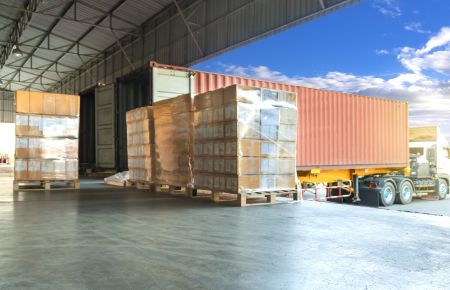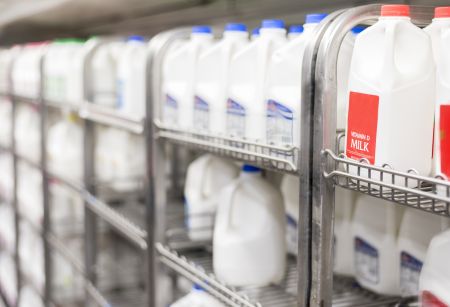
For more insights on how businesses are responding to supply chain challenges during COVID-19, check out this recent article by Oliver Truman, the first of a weekly series featuring real-time findings from our ‘on the pulse’ pandemic tracker.
Social & Economic Hardships
As the coronavirus has spread around the world over the past four months, the pandemic has brought unimaginable devastation with the loss of over one hundred thousand lives and millions of confirmed cases of the disease. Globally we are self-isolating and staying away from meeting places and events to avoid contracting or spreading the disease. In addition, widespread policies mandating social distancing are in effect, and most US states have shut down non-essential businesses like sit-down restaurants, gyms, and boutiques as well as schools, parks, and other public places.
The COVID-19 outbreak has upended our day-to-day life and significantly impacted the global economy. In the US, an analysis by Moody’s estimates the daily US economic output has fallen 29% compared with the first week of March1 prior to extensive closures. Industries like travel and hospitality face a devastating impact from the virus.
With large portions of the workforce laid off or working fewer hours, over 20 million Americans filed unemployment claims during the weeks between March 21 and April 11, according to the Labor Department. At the other end of the spectrum, some industries are scrambling to find workers to meet increased demand. Unfortunately, there are indications that illnesses and fears associated with the virus are leading to workforce shortages and strains on supply chains. The roles most impacted at this point in the crisis are truck drivers, grocery store staff, and workers in meat processing plants, and shortages of these workers may lead to delays or shortfalls in certain products in the coming weeks.
Adapting To Huge Changes In the Channel Mix
A striking aspect of the COVID-19 crisis is the degree to which some industries have been entirely shut down while others are surging. Indeed, even similar products within related sectors of the economy have been impacted in very different ways. The clearest example of this may be in food manufacturing and processing.
Data from the USDA shows just over half (54%) of the $1.7 trillion in US food sales in 2018 involved away from home meals. However, due to the coronavirus, most of the nation’s one million restaurants have closed entirely or moved to exclusively takeout/delivery, and 95% of Americans are under some form of stay-at-home order. Significantly more at-home meal preparation, along with consumers stockpiling as they prepare for spending more time at home, have meant a major spike in demand in retail channels, particularly grocery and ecommerce. Food service sales have subsequently plummeted, with the shift representing a massive challenge for the food supply chain.

Nowhere is the difficulty of adapting to a new channel mix more obvious than with dairy and other farm fresh products. At the same time as panic-buying has resulted in limits on items like milk, butter, and eggs at stores, farmers are dumping their excess supplies of milk and eggs. Differences in product and packaging requirements for food service compared to retail channels mean producers cannot easily pivot to serve consumers.
For example, grocery stores generally stock wedges from cheese blocks, not the sliced barrel cheeses used by fast food restaurants. In addition, products headed to food service are mostly sold in bulk and not distributed in consumer-facing packaging. Think of a 10lb bag of shredded cheese versus the 8-ounce package shoppers buy for home.
In cases where processors might be able to modify production and acquire the packaging to sell in the grocery channel, they often lack relationships with stores to negotiate for shelf space.
For some consumer packaged goods companies, the surge in demand has meant sharpening their focus to produce key SKUs at the needed volume. One example is Coca-Cola which is seeing a spike in demand in grocery and ecommerce as consumers stock up, and the brand is aiming to deliver its best-selling beverages while smaller SKUs may go unstocked for now2.
The Impact Of COVID-19 On Transporting Goods
Even when manufacturers are able to get the needed product in the right packaging and secure space on the shelf, transporting goods represents another major challenge.
Carriers in general do not have extra capacity to meet the spike in demand brought about by the crisis, and the delivery of goods has slowed in many cases due to several factors. First, a chronic shortage of freight truck drivers has existed for several years as the aging workforce of drivers retire without sufficient numbers of new workers joining the industry to replace them. As the coronavirus spreads, there are even fewer as some drivers are not working due to illness. Meanwhile, others fear contracting a virus that is particularly dangerous to those over 60 and have opted to not take the risk of working in a job where they interact with many others along their routes.
In addition to the shortage of drivers, logistical limitations are preventing the efficient distribution of products to meet surging demand. Delays and backlogs at plants may result from overloaded delivery docks and storage areas that lack the space to handle the increased output. A shortage of refrigerated trucks has slowed shipment of products like meats and grains as well.
Managing The Supply Chain To Meet Health & Safety Needs
Arguably the most critical supply chain during the crisis serves the healthcare industry, ensuring sufficient supplies of medical devices like ventilators, sanitizers/cleaners, and personal protection equipment (PPE), including masks, gloves, and gowns.
Export controls have been imposed in many markets, and in the case of medical equipment and PPE, governments are re-routing deliveries. Officials have seized products at the border to keep them in the country and in some cases sent PPE to hospitals instead of the original buyer.

Ansell, a leading manufacturer of PPE, says demand for their products has doubled and their supplies are sold out3. It is unclear how much they can boost supply due to raw material shortages and supply chain disruptions.
Pharmaceutical manufacturing is another vital area where supply chains are strained. Critical medications are in increasingly short supply as drug manufacturers in China and India, which the US relies heavily on for its drug supply, have largely shut down plants and blocked exporting active pharmaceutical ingredients used in drug manufacturing.
As the coronavirus first spread, the initial challenges were related to reduced supplies from China. Now supply chains are challenged everywhere, and with unemployment rising and consumer spending reduced, demand is plummeting. Outside of companies making essential medical/PPE goods or products for the defense industry, few large manufacturers can keep operating at full capacity. Automakers and their suppliers have in most cases closed manufacturing facilities. However, some companies are adapting and have shifted to produce different goods in order to meet the surge in demand for medical-related products. In one case, a producer of oil/gas equipment has moved to making medical visors.
For manufacturers finding their raw materials in short supply, local suppliers and 3-D printing are being used more. Local sourcing allows producers to avoid rising import costs, export restrictions, and delays in shipping times due to fewer flights, overextended trucking companies, closed ports, among other barriers.
Over the past few years, 3D printing solutions have offered advantages to companies looking for greater agility in manufacturing, such as in the production of spare parts allowing companies to maintain smaller inventories. During the pandemic, 3D printing is a valuable tool to support supply chains and address product shortages. NASCAR, which typically uses 3D printing to build composite parts for stock cars, is producing PPE to donate to hospitals4.

Preparing For Future Supply Chain Challenges
Following the current crisis, organizations will have an opportunity to learn from the challenges they experienced and take steps that will strengthen their supply chain. For many, the crisis will serve as a “wake-up call” that better preparation is needed, and supply chain management experts say mapping out supply networks is key5. The process should include not just a company’s immediate suppliers but their suppliers’ suppliers and their global footprint.
Many companies still rely on personal relationships and anecdotes when sourcing and tracking their suppliers. The lack of systematic collection of this information means that when procurement personnel leave, change roles, or retire, their knowledge leaves with them.
While supply network mapping can be resource intensive and difficult, companies may discover the value of the map is greater than the cost and time to develop it. Knowing which suppliers, sites, parts, and products are at risk during a crisis allows organizations to put themselves first in line to secure constrained inventory and capacity at alternate sites.
Companies should also explore new ways to make their sourcing more agile, and some of these may run counter to conventional wisdom. For instance, over recent decades global companies have concentrated production geographically to save money6. Organizations should re-examine the marginal benefits of this kind of concentration since the additional cost of a large company operating plants in different locations is often not more than the cost of having one huge plant. At a certain point, companies may reach the maximum (or near maximum) incremental improvements in efficiency. That is, they may not lose much in terms of gained economies of scale at half the size. By running two plants, businesses lose little in efficiency, but make tremendous gains in flexibility with a supply chain that could better handle future pandemics and other natural disasters.
Other emerging technologies such as Blockchain and driverless vehicles can offer solutions to help governments and businesses respond to COVID-19. Blockchains are already supporting in various ways by certifying the origin of PPE and other sanitary products to ensure authenticity and limiting the privacy impact of tracing and immunity tracking apps. In Italy, blockchain technology has enabled donations to the Red Cross to go through and has been used to certify a news on a publishing platform to combat fake news.7

Meanwhile, autonomous vehicles can help address a shortage of drivers and solve delivery issues including new requirements for touchless deliveries. There are signs deployment of the technology is accelerating due to the pandemic. In fact, automated vehicles distributed groceries and medical supplies in China during the coronavirus lockdown. JD.com delivered goods in early February with workers loading autonomous logistic vehicles which could each deliver dozens of packages to destinations including hospitals.8
Shortages of essential medicines and equipment during the crisis have exposed the dependency of the US on China and other nations. This has led to calls for the US to move away from reliance on importing these types of essential goods and strengthen domestic capabilities to manufacture drugs and medical supplies.
What Comes Next
As the number of infections and coronavirus-related deaths appear to have reached an apex or at least a plateau in some areas, officials have begun to assess lifting restrictions and re-opening businesses. Leaders in the US are looking to countries like China and Italy where the outbreak hit earlier to understand how to avoid potential dangers of lifting shutdown orders prematurely.
As guidelines are prepared in the coming weeks, it is clear that many aspects of daily life in the areas hardest hit by the virus will be significantly altered at least in the near-term until widespread testing is undertaken, and perhaps even longer still until a vaccine is brought to market. In the meantime, supply chains, particularly those with the healthcare and food sectors, will undoubtedly be strained and companies forced to adapt to a new reality.
1https://www.wsj.com/articles/state-coronavirus-shutdowns-have-taken-29-of-u-s-economy-offline-11586079001
2https://www.cnbc.com/2020/03/24/coronavirus-coca-cola-ceo-says-supply-chain-is-creaking.html
3https://www.ft.com/content/140c9875-2c57-4e54-a4c4-e8518645887c
4https://www.forbes.com/sites/stevebanker/2020/04/13/covid-19-and-3d-printing/#7fb6317a3f7a
5https://hbr.org/2020/03/coronavirus-is-a-wake-up-call-for-supply-chain-management
6https://insight.kellogg.northwestern.edu/article/coronavirus-upended-supply-chains-how-companies-can-prepare-disruption
7https://cointelegraph.com/news/eu-founded-task-force-to-study-how-blockchain-may-help-covid-19-response
8https://www.weforum.org/agenda/2020/03/china-covid-19-coronavirus-mobility-solutions/



